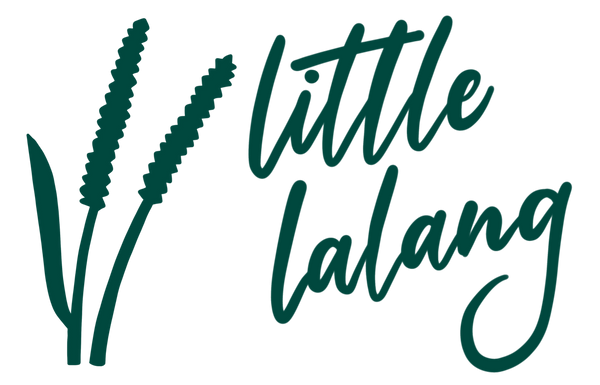Cloth Diapering FAQ
Frequently Asked Questions
- What’s the difference between the different types of cloth diapers?
- How many cloth diapers do I need?
- Is it really cheaper to cloth diaper?
- Is it really more environmentally friendly to cloth diaper?
- Are cloth diapers suitable for babies with sensitive skin?
- Is the cloth diaper too bulky for my child?
- Help! I'm getting leaks!
- How do I cloth diaper when going out?
- Tell me about the brands you carry!
1. What’s the difference between the different types of cloth diapers?
All these different names can be intimidating! That’s why we created an intro to the different types of cloth diapers to give you a quick and clear overview of the pros and cons of each type, so you can make a choice with confidence!
2. How many cloth diapers do I need?
If you intend to cloth diaper full-time, we recommend at least 30 cloth diapers.
If you are cloth diapering part-time (e.g. on weekends only), then around 10-15 cloth diapers should work.
If you are cloth diapering part-time (e.g. on weekends only), then around 10-15 cloth diapers should work.
3. Cloth diapers seem really expensive! Is it really cheaper to cloth diaper?
We get it — the upfront cost of cloth diapering can be pretty intimidating! But if you calculate the long-term costs, cloth diapering is definitely cheaper.
Babies go through an average of 3000 disposable diapers in their first year. Disposable diapers cost an average of $0.30 per piece (less when your baby is a newborn and wearing a smaller size, but more as they grow older and you have to buy bigger sizes). That’s about $900 in the first year alone. The average age of toilet training in Singapore is between 2-3 years old. So that’s about $2,250 on diapers for one child.
In contrast, 30 cloth diapers will cost you on average $1,050 (~$30-40/diaper). The additional cost of water used for cloth diapering is typically less than $20/month. So the total for the first year of cloth diapering would be $1,290. This means that even if you only use cloth on one child, you will save money! And if you have multiple children in cloth, you will save even more money because you can reuse the same cloth diapers.
In fact, many people around the world choose to cloth diaper primarily because it is more affordable. If cost is your main concern, we recommend using a system of covers and flats. Covers and flats can be handwashed, so this is a system that works even if you don’t have access to a washing machine. They also dry extremely quickly, so it is possible to fully cloth diaper a child with 3 covers and 6 flats (you will need to wash daily). You can check out our bundle packs for additional discounts!
4. Is it really more environmentally friendly to use cloth diapers?
Well, it depends, because every cloth brand and every disposable brand are different. But generally, yes, it is more environmentally friendly to use cloth diapers. Although it seems like it takes a lot of water and energy to wash cloth diapers, remember that lots of water and energy are needed to manufacture disposable diapers as well, and that people use many, many more disposable diapers compared to cloth diapers. Plus, even after a disposable diaper has been used, it continues to harm the environment because incinerating the disposable diaper also requires energy and produces toxic chemicals.
To ensure minimal environmental impact, you can line dry your diaper laundry instead of using the dryer, purchase only what you need, use second hand diapers, and have a proper wash routine so that your diapers will be in good enough condition to be passed down to the next user.
5. Do cloth diapers cause rashes? Are cloth diapers suitable for babies with sensitive skin?
Cloth diapers are definitely suitable for babies with sensitive skin. Many parents actually switch to cloth diapers BECAUSE their children have reactions to disposable diapers!
All diapers cause rashes if they are left for too long on a baby. Cloth diapers are more breathable than disposable diapers (just like how wearing clothes is more comfortable compared to wearing a plastic poncho). Moreover, cloth diapers made of natural fibres like cotton, bamboo, and hemp contain less chemicals compared to disposable diapers, which have chemical compounds and artificial dyes and scents within the lining.
6. Is the cloth diaper too bulky for my child?
The brands we’ve selected tend to have very trim cloth diapers, so they shouldn’t be too bulky. That being said, cloth diapers will generally be thicker than disposables. Don’t worry, this is perfectly fine for your child. Babies’ bone structure is different from adults’ bone structure (for example, babies’ spines are in a C-shape, whereas adults’ spines are in an S-shape). Cloth diapers actually promote good hip development by pushing babies’ legs apart into a froggy position.
7. Help! I’m getting leaks!
Oh dear, that’s really frustrating (we know!!). Contact us via email (hello@littlelalang.com) or direct message (@littlelalang), so that we can give you personalised help about this!
8. How do I use cloth diapers if I’m going out of the house?
If you’re going out for less than 2h, bring one cloth diaper and 2 cloth wipes in a small wet bag. If you’re going out for half a day, you’ll need 2 cloth diapers, 4 cloth wipes, and a medium sized wet bag.
You can change your baby’s diaper in a regular changing room or anywhere you would normally change your baby’s diaper.
Simply put whatever cloth wipes you used to wipe baby’s bum into the dirty diaper, then fold up the dirty diaper and put it in the wet bag. Don’t worry about poop (if any) — it’ll be totally fine to deal with it at home, and our wet bags are designed to hold in smells.
